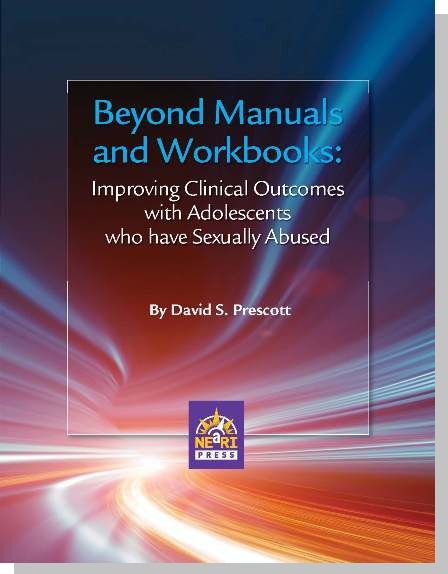Beyond Manuals and Workbooks: Improving Clinical Outcomes with Adolescents who have Sexually Abused
By David S. Prescott, LICSW
© 2012Available summer 2012 from NEARI Press
The hand that wields the scalpel is more important than where that hand went to medical school.
– Scott D. MillerNobody cares how much you know until they know how much you care.
– AnonymousIntroduction
When it comes to providing treatment for adolescents who have sexually abused, the material in this booklet may be easier to write than to practice. Professionals often believe themselves to be more competent with reflective listening skills than they really are, particularly in real-life client situations. In fact, the majority of professionals treating adolescents who have sexually abused do effective work; many studies have confirmed this (e.g., Reitzel & Carbonell, 2006). Just the same, going from very good to great can prove challenging. None of us gets it right all the time; that’s why studying and improving ourselves is so important. As you read this booklet, consider how your experience is likely similar to your client’s. Much of this information asks you to step outside your “comfort zone”.
This booklet briefly summarizes years of research and practice, primarily in inpatient treatment centers. It comes from the perspective of a clinician, supervisor, and administrator who has worked to understand how all human beings can best reduce the suffering associated with sexual abuse. Just as every research article in our field seems to contain the phrase, “more research is needed,” it is important to note that this booklet doesn’t pretend to be the final word. Rather, it offers resources for people entering the field and for old-timers interested in other perspectives on common challenges.
